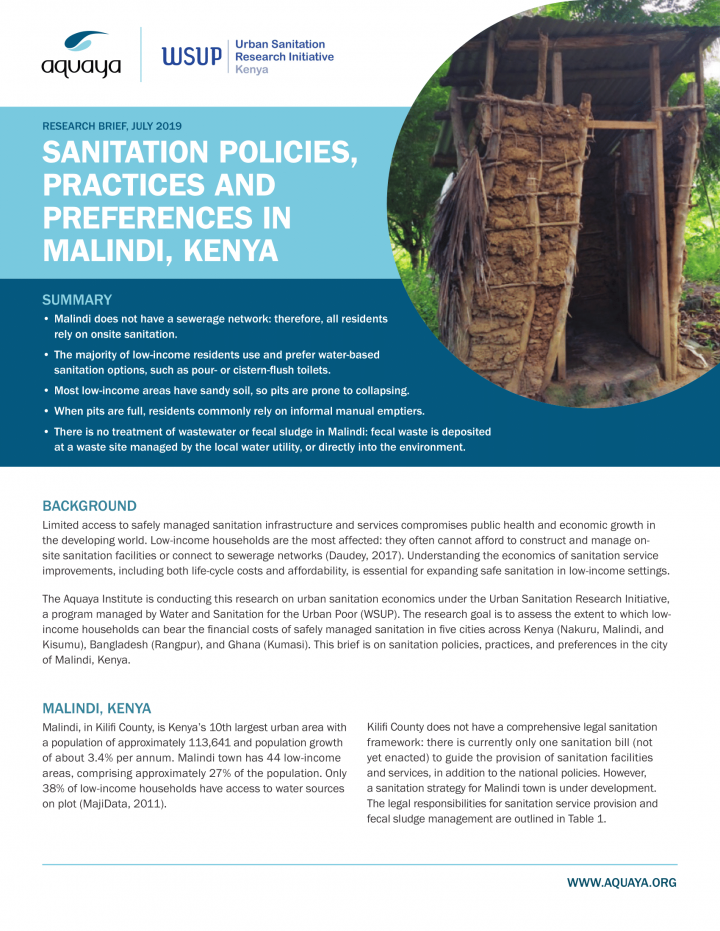
Published in: 2019
Pages: 3
Publisher:
Research Brief, The Aquaya Institute
Author:
The Aquaya Institute
Uploaded by:
Alicea Easthope-Frazer
Partner profile:
Aquaya Institute
2209 Views
46 Downloads
Location of library entry
The Aquaya Institute is conducting this research on urban sanitation economics under the Urban Sanitation Research Initiative. This brief is on sanitation policies, practices, and preferences in the city of Malindi, Kenya.
SUMMARY
• Malindi does not have a sewerage network: therefore, all residents rely on onsite sanitation.
• The majority of low-income residents use and prefer water-based sanitation options, such as pour- or cistern-flush toilets.
• Most low-income areas have sandy soil, so pits are prone to collapsing.
• When pits are full, residents commonly rely on informal manual emptiers.
• There is no treatment of wastewater or fecal sludge in Malindi: fecal waste is deposited at a waste site managed by the local water utility, or directly into the environment.
Bibliographic information
The Aquaya Institute (2019). Sanitation Policies, Practices and Preferences in Malindi, Kenya. Research Brief, The Aquaya Institute
Filter tags
English Factsheets and policy briefs Sub-Saharan Africa















